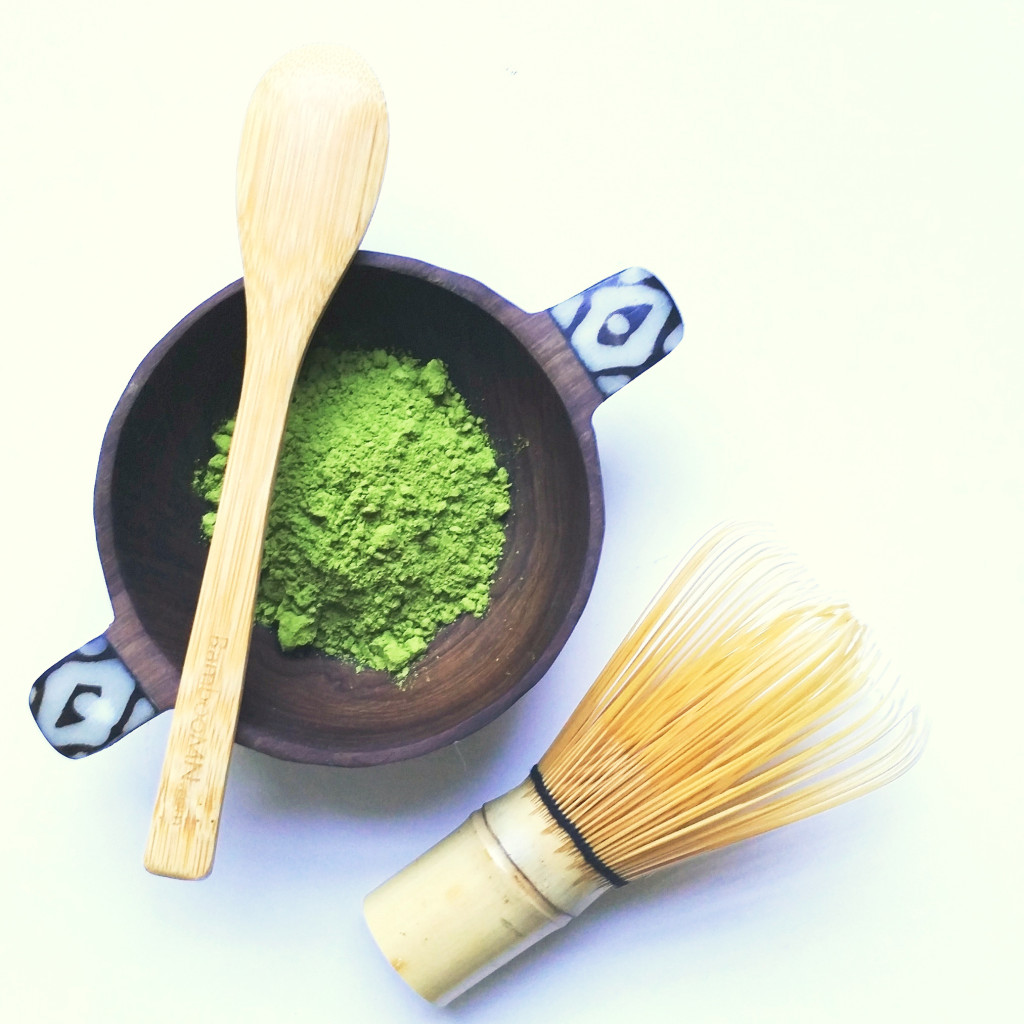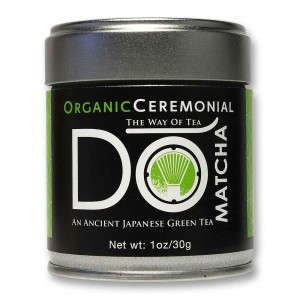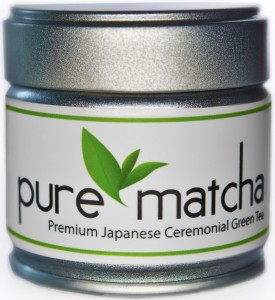-
Meet Your Matcha
- Posted onAli J.
- in All Things Sweet and Savory
- onSeptember 16, 2015
- 3 Comments.
In an effort to try to cut out my morning cup of joe, I’ve made the switch to Matcha Tea. With 1/3 of the amount of caffeine as a traditional cup of coffee and boasting of many health benefits it was my first choice. Knowing little about it or even what it would taste like I blindly ordered some on Amazon and gave it a go. I’ve done more research and experiments with several different recipes and wanted to share what I found with all you other Matcha virgins!
First of all, what does it taste like?
I’m not going to lie, the flavor is very unique and unlike anything you’ve tried. It may take some getting used to for some palates but I honestly love it. Very earthy with a subtly sweet finish.
What is Matcha?
Matcha is a green tea that has been shade-grown, de-veined, de-stemmed and ground into a very fine powder. Matcha isn’t steeped, its “eaten.” Matcha drinkers benefit from a higher concentration of antioxidants, vitamins, minerals and fiber than are found in any other tea!
What are the benefits of drinking Matcha?
- It’s packed with antioxidants including the powerful EGCg
- Boosts metabolism and burns calories
- Detoxifies effectively and naturally
- Calms the mind and relaxes the body
- Is rich in fiber, chlorophyll and vitamins
- Enhances mood and aids in concentration
- Provides vitamin C, selenium, chromium, zinc and magnesium
- Prevents disease
- Lowers cholesterol and blood sugar
What is the caffeine content?
Matcha does contain caffeine. The caffeine in Matcha is alkalizing rather than the opposite—acidic. There is caffeine in Matcha, but it releases into the bloodstream slowly. The time of the release varies, but it is not nearly as harsh as the caffeine rush inherent in coffee and energy drinks. This gradual and consistent release provides the body with just the right amount of caffeine over a longer period of time rather than dumping a huge amount of caffeine into the body all at once. Matcha still yields an immediate boost, but not the extreme rush. The lift is far more appropriate to your energy demand, and can be easily regulated based on that demand. Once again, a blast of too much caffeine results in an acidic state that can harm the stomach lining and arteries over time, taxing the organs and disrupting the body’s overall functionality. By contrast, Matcha’s caffeine has an alkalizing effect, resulting in a much gentler influence on the stomach, which gradually aids with digestion, healing, cleansing.
What is the best kind to buy?
In most cases the old adage, “You get what you pay for” is true and it’s no different when it comes to Matcha. You want Matcha tea that was manufactured using the old age Japanese ceremonial methods. Since the source and marketplace for this awesome green tea is vast, discrepancies do exist in labeling, so one has to be careful. As compared to regular tea, a good Japanese Matcha tea brand will cost you a little more. Stay away from Matcha brands that are super cheap, as the quality must have being compromised to make this possible and you will missing out on it’s many powerful health benefits. I’ve listed a few below that are highly recommended and come with great reviews.
How to use Matcha.
Other than your traditional hot cup of Matcha tea there are many ways you can use Matcha. Use it in soups and purees, smoothies, lattes and baking! A quick google search will yeild endless ideas and inspiration. My favorite so far is the Coconut Matcha Latte. Recipe as follows:
Coconut Matcha Latte
Serves: 1 latteIngredients- ½ – 1 teaspoon Aiya Cooking Grade Matcha
- (or 1 tablespoon Aiya Matcha Zen Cafe Blend which is lightly sweetened)
- ¼ cup hot water
- ¼ cup warmed coconut milk
- optional – sweetner of your choice, to taste
Instructions- Sift your matcha so it is lump-free (optional – I skip this step when I’m too lazy, which is always )
- Spoon the matcha into a large mug. Add the hot water and coconut milk and whisk briskly, in an up and down motion, until frothy – about 30 seconds or so. (You can also use a small kitchen whisk if you don’t have a matcha whisk).
- Taste and add additional water, coconut milk, and/or sweetener to your liking. (I added just a bit of coconut sugar).
- Enjoy!
There you have it, all the basics to get you started on your Matcha journey. If you decide to give it a try I’d love to hear what you think and please feel free to share any killer recipes you come up with or stumble across! Now go and get your Matcha on!
If you enjoyed this article please consider sharing it!
About Ali J.

Hey there. I’m Alison, wife to Ty and mama to Dex. We live a simple and quiet life in the beautiful hills of Kentucky. I love many things, a few of my favorites being fashion, food and most of all family. This little blog is a smattering of them all. Thanks for stopping by!












You have convinced me to order my first batch! I am nervous but I know that I’m very dependent of café so this will hopefully be a nice change 🙂 Thanks so much for this great article! xo, Keila
Great content! Very articulate and informative. It’s funny because I was on a huge matcha kick for a while, but then I started eating the Haagen Das ice cream and grew tired of the flavor. I think you convinced me to give it another go. Thanks for sharing!
Thank you so much, I’m so glad you enjoyed the article. Honestly I still prefer the taste of coffee but I haven’t had a cup since this post because the Matcha gives me much better energy and I’m loving the way it makes me feel!